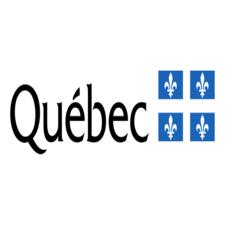Mariculture
Type of resources
Topics
Keywords
Contact for the resource
Provided by
Formats
Representation types
Update frequencies
status
-
These data were created under DFO’s Strategic Program for Ecosystem-based Research and Advice - Aquatic Invasive Species Program: “Evaluation of the movement of marine infrastructure as a pathway for aquatic invasive species spread”. This geodatabase contains floating dock locations in coastal waters of the Pacific Northwest, from Puget Sound, Washington to Southeast Alaska. These data were assembled by Josephine Iacarella and used in an analysis to understand the role of floating infrastructure as a vector in the spread of marine nonindigenous species (Iacarella et al., 2019). The data are represented as point vectors, though docks have associated size estimates. Data were collected with the aim to have the most accurate representation of coastal coverage of structures in 2017. The most recent images from Google Earth were used, though in some areas these date back a few years. Floating docks included those that extended into the subtidal and were not fixed on pilings. Dock locations were binned into size categories, with small docks and associated marina structures grouped together as ‘marina areas’ based on spatial clustering and a visual estimate of size (haphazard measurement selection, n=35 per category; small: 57.2 m2 ± 6.7, medium: 379.1 m2 ± 42.8, marina area: 4,453.5 m2 ± 744.4). A total of 7,809 floating dock sites were recorded, covering an estimated area of 2.3 km2.
-

Mariculture includes several different types of activities in public marine areas, such as the cultivation and harvesting of seaweed, the harvesting of green urchins, and the breeding of blue mussels or scallops, among others. Each of these activities has very distinct environmental, physicochemical and biological needs, in addition to having to coexist safely with other human activities and constraints in the maritime environment. For these reasons, mariculture activities must take place in delimited and reserved marine areas, and therefore require a permit. The “Maricolous Sites” data set brings together under provincial coverage (polygons) the information contained in the permits issued by the regional directorates. It identifies businesses, and presents their permit numbers, types of activities and species that they are authorized to raise, as well as the location and area of sites (polygons) under permits and authorizations to operate a mariculture site issued by MAPAQ.**This third party metadata element was translated using an automated translation tool (Amazon Translate).**
 Arctic SDI catalogue
Arctic SDI catalogue